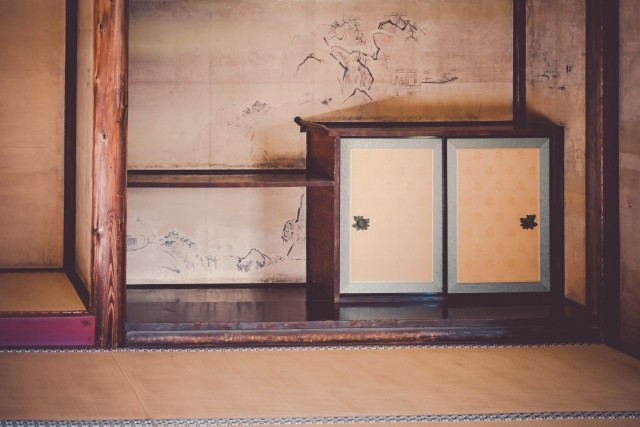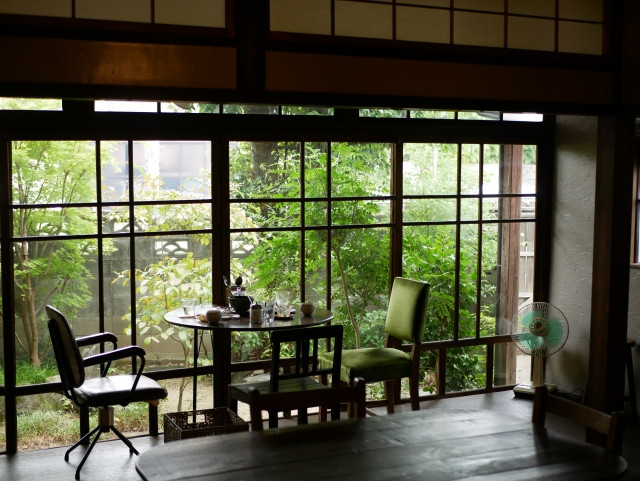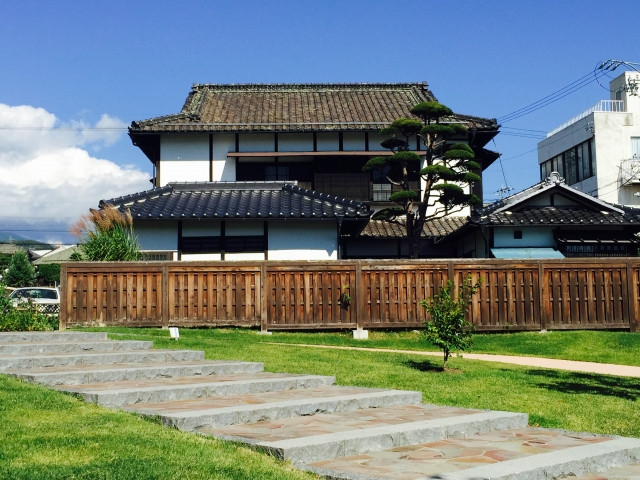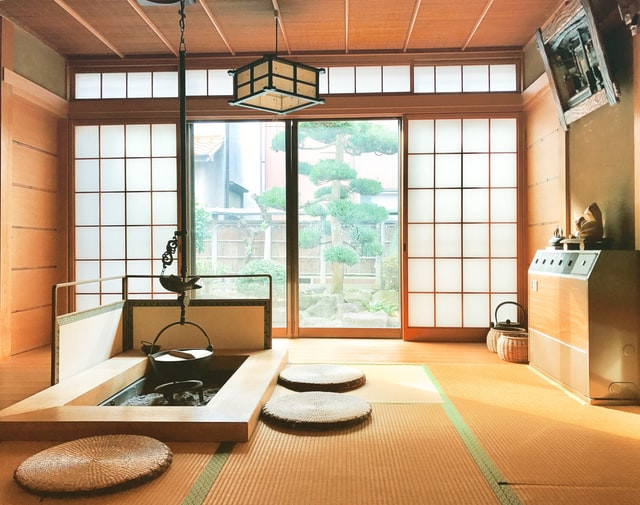Be it the physical freedom in having space, or the freedom in aesthetic design, living in a house in Japan just offers a different feel as compared to apartments. Japanese houses have a different layout, furniture, and other interesting aspects, and here’s the basic rundown about them.
Table of Contents
- Features of a Traditional Japanese House
- Combination of Traditional and Modern Japanese Houses
- Planning to Buy a House?
- Summary
Features of a Traditional Japanese House
A traditional Japanese house or a minka (民家) has a lot of distinct features that most would find interesting and unique. We discuss them below by common architectural features and traditional furniture.
Common Architectural Features of a Traditional Japanese House
If you look at a traditional Japanese house, you will notice it is mostly made up of wood and white paper-like material that serves as their walls, windows, movable screens, and sliding doors to divide rooms. This material is called a shoji, and the reason traditional Japanese houses use this is to let the natural light into their house.
Another similar aspect in traditional Japanese houses is the fusuma that also serves as doors and walls. The fusuma is similar to shoji but is more solid and, at times, made out of cloth instead of paper-like material. They use the fusuma instead of wood as walls or doors to allow for easier future reconstruction.
There are also different rooms and parts of the house in a traditional Japanese house like the genkan or the main entrance where people leave their shoes and coats, the engawa that is similar to a veranda that surrounds the house, and the tokonoma, a slightly raised platform or area used for decorating, often found in the room where they receive guests.
Traditional Japanese Furniture and Other Items

Aside from its architecture, the traditional Japanese homes also have furniture and fixtures that one would find unique.
Tatami Mats
One example would be the tatami mats that are essential in Japanese culture, mainly used for sitting or sleeping on. These soft but firm mats are made from rice straw that serve as flooring in Japanese houses. The floor is essential in Japanese culture since they sleep and sit on the floor and do most rituals, ceremonies, and rites while sitting on the floor.
Kotatsu
Another example would be the kotatsu which you might have heard about or seen in anime and Japanese dramas. A kotatsu is a table with an electric heater underneath with a blanket covering where the family would mostly eat and hang out during the winter season.
Cushions and Futons
Cushions, called zabuton, are usually used for sitting on and are put on the tatami. For traditional homes with low wooden chairs, cushions are used for comfortable seating.
Futons are used when sleeping and laid on top of tatami, giving relaxation and ease when resting.
Read more about futon here:
Understanding Japanese Futons, Standard of Quality Rest
Altar
Prayer tables (kamidana) and altars (butsudan) are sometimes found in traditional Japanese houses. They are usually made of wood with wood carving designs.
Tansu
Tansu, or commonly called a chest, is used as storage for clothes and other personal items in Japan. These can be stand alone chests, or already built into the structure of the house. For example, some traditional houses in Japan have a kaidan tansu, or tansu under the stairs.
Chabudai
The traditional Japanese houses also have a chabudai or low dining table where the family eats and drinks tea while sitting on the aforementioned zabuton (floor cushions).
Writer's Pick
Combination of Traditional and Modern Japanese Houses

Space Maximization Design
Space maximization is important in Japanese houses since owning or renting for small spaces is expensive, especially in populated city areas. In addition, down-sized living is popular in major cities in Japan because of its high cost of living. Some examples of down-sized living designs in Japan are capsule hotels where you can stay for a night in a stack of futuristic-looking beds.
Another example is compact prefab houses similar to tiny houses that are strategically designed to save space. Traditional Japanese houses are the epitome of minimalism. You would notice that these houses have little furniture and as we mentioned before, have walls that can be easily replaced or moved to add space. A lot of modern Japanese houses being built try to incorporate these traditional Japanese house designs for them to save space.
Practicality in Modernity
Some modern Japanese houses combine traditional and modern designs when they build or renovate their house. For example, they use or incorporate tatami mats but do not use shoji or fusuma as doors, walls, or windows. Instead, they use glass for windows or wood, bricks or cement for doors and walls - but still keep the open space and allow natural light to fill the spaces.
Another example would be the modernization of bathrooms; they replace the old bathroom essentials like the toilet and bathtub with the latest versions but still keep the layout of it all being in one room. In terms of furniture, they use bed frames instead of futons. They also use dining tables and chairs when eating instead of the chabudai and zabuton.
Planning to Buy a House?

No Limitation in Nationality nor Residency
If you are planning to buy a house in Japan but worried that you are not allowed to because you are a foreigner or have no residence visa? Then worry no more! Anyone can buy a house in Japan whether you be a local or not. The only thing you have to do is hand over a written notice to the Bank of Japan within 20 days of the date of purchase. On the downside, if you are not a resident with a work or residence visa or not married to a resident, then it may be difficult to find a bank that can loan to you.
Also, if you plan to buy a traditional house with the features we mentioned above, chances are that they are outside the bigger cities.
‘Abandoned’ Houses for Sale in Japan
According to the Ministry of Internal Affairs and Communication, there were about 8.5 million abandoned houses or akiya scattered across Japan in 2018. These houses are abandoned due to various reasons such as owners dying, moving, or emigrating - as well as Japan’s declining population. A lot of these houses are available for sale and are cheaper than new houses but may need major reconstruction and renovation work which adds to the costs. Moreover, you would also need to clear out the house yourself in which it would take time and effort. If you manage to find an abandoned house, and you are willing to reconstruct or renovate or it is already in good condition, start by giving a letter of intent to the seller to start negotiating.
※ E-stat - Portal Site of Official Statistics of Japan, "Housing and Land Survey," (Excel 4: Vacant Dwellings by Vacant Status (4 Groups) and Type of Building (4 Groups) - Japan, 3 Major Metropolitan Areas, Prefectures and Major Cities (1958~2018))
To read more about buying a house in Japan, please take a look at our article on it!
Searching For a Home in Japan: Average House Cost and Things to Consider
Summary

Japanese traditional houses contain unique architectural designs that have lasted for a long time In the modern world, these houses are reconstructed and renovated in order to have a modernized feel and look, while still maintaining some of the key features.
There are a lot of houses that are for sale in Japan including traditional Japanese houses, modern houses, and even abandoned houses. Foreigners buying houses in Japan is becoming quite commonIf you ever plan to buy a traditional house in Japan, the best advice is to do extensive research on costs and the place where you plan to buy a house first. We hope you find your dream house in Japan!

































